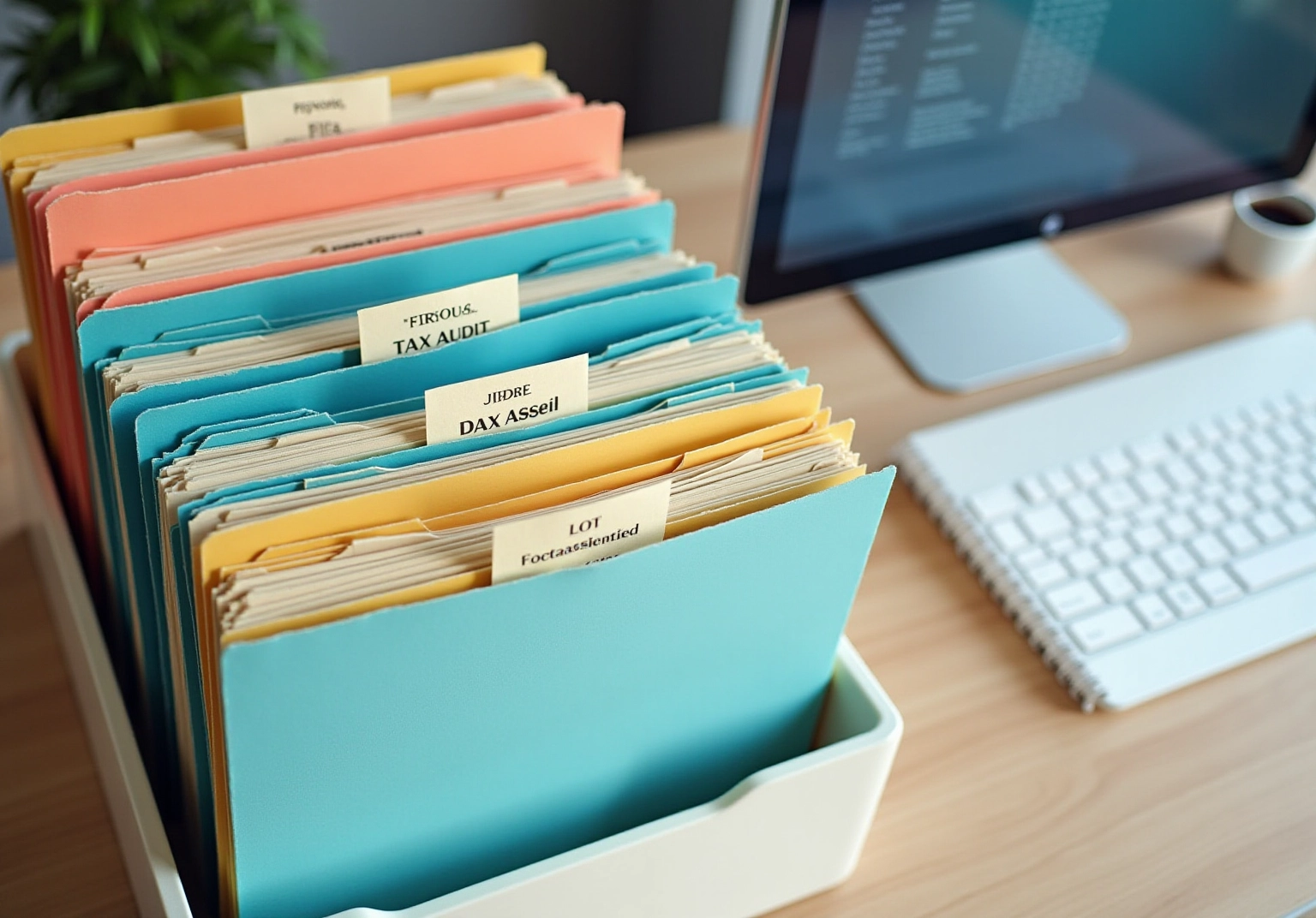Overview
Efficient client file collection is paramount for financial professionals, as it directly influences operational efficiency and customer satisfaction. By employing streamlined processes and tools like Glasscubes, firms can significantly reduce reply times and bolster engagement. User reports indicate a remarkable 50% reduction in response times, alongside a 40% increase in customer interaction. These enhancements ultimately foster stronger client relationships, demonstrating the transformative potential of adopting such innovative solutions.
Key Highlights:
- Efficient client file collection is vital for financial professionals, impacting efficiency and customer satisfaction.
- Using platforms like Glasscubes can lead to a 50% reduction in reply times and a 40% increase in customer engagement.
- A well-organised collection system minimises the risk of misplaced documents and enhances productivity.
- Establishing clear communication about document requests and deadlines fosters collaboration and improves response rates.
- Automated notifications help manage file requests effectively, contributing to better customer relationships.
- Common challenges in file collection include missed deadlines and unclear requests, which can be mitigated through clear communication and user-friendly tools.
- Regular evaluation of procedures and soliciting client feedback can enhance the efficiency of file collection processes.
Introduction
Efficient client file collection stands as a cornerstone of success for financial professionals, significantly influencing both operational effectiveness and client satisfaction. By streamlining this process, accountants can reduce response times by up to 50% and markedly enhance engagement rates. Yet, a pressing challenge persists: how can firms adeptly navigate the complexities of document requests and client communication to ensure timely submissions? This article explores five essential steps designed to empower accountants in optimising their client file collection processes, ultimately fostering stronger relationships and boosting productivity.
Understand the Importance of Efficient Client File Collection
Effective collecting client files is essential for financial professionals, as it significantly influences both efficiency and customer satisfaction. By simplifying this process, accountants can minimise the time spent on follow-ups, which leads to improved reply rates and a remarkable 50% reduction in reply times.
Companies leveraging Glasscubes have reported an impressive 40% increase in customer engagement rates, attributed to its automated communication capabilities and real-time progress monitoring. Users like Steve, an audit manager at MGI, have noted that the platform facilitates quicker responses from customers, as all information requests and inquiries are centralised in one secure workspace.
Furthermore, Glasscubes has enabled firms to save substantial time; for instance, Sophie Montgomery from TaxAssist Accountants reported an extraordinary saving of 288 hours in just one tax season. This highlights the necessity for financial professionals to prioritise effective methods for collecting client files, which empowers them to manage their workloads more efficiently and avoid unnecessary delays.
By focusing on these streamlined processes, accountants can enhance their operational efficiency, ultimately fostering stronger connexions with customers.

Choose the Right Tools for Collecting Client Files
To effectively gather customer records, it is essential to focus on collecting client files by assessing various document collection tools tailored for accounting needs. Platforms like Glasscubes stand out by offering secure, automated document requests and reminders. These features have been proven to reduce response times by 50% and improve customer interaction by 40%. Glasscubes presents a well-organised list that clearly outlines pending queries, fostering confidence in your firm and minimising follow-up time.
Key features to consider include:
- User-friendly interfaces that require no training
- Adherence to data protection regulations, such as GDPR
- Tools that provide real-time reporting, enabling financial professionals to monitor the status of requests and ensure that no documents are overlooked
By selecting the right tools, accountants can optimise workflows and enhance customer engagement, making collecting client files a vital component of modern accounting practises.

Set Up Your Client File Collection System
Creating a clear and organised collection system for customers is crucial for efficiency. Establish a logical folder arrangement that categorises documents based on customer requirements, such as:
- Personal tax
- Audit
- Payroll details
This method significantly minimises the risk of misplaced documents. Furthermore, implementing a uniform naming standard for documents is essential; research indicates that 42% of companies face challenges due to inadequately named files, complicating retrieval. Therefore, titles must distinctly represent the content, utilising formats such as date, individual name, or document type.
Next, establish a timeline for document requests and incorporate automated reminders to encourage timely submissions. This organised approach simplifies the process of collecting client files and ensures that all team members can access essential documents when needed. A well-structured folder organisation not only enhances productivity but also supports adherence to legal and security standards, ultimately leading to greater customer satisfaction.

Engage Clients and Manage File Requests Effectively
To effectively engage customers, it is essential to clearly communicate the significance of the requested documents and their submission deadlines. Customised messages can illustrate how prompt replies benefit both parties, fostering a collaborative atmosphere.
By utilising automated notifications through Glasscubes, users are consistently updated on impending deadlines, potentially leading to a 50% reduction in reply times, as reported by users of the platform. Furthermore, offering multiple submission options, such as secure portals or email, caters to individual preferences and enhances convenience.
By proactively managing file requests, accountants can significantly improve reply rates, with firms employing Glasscubes experiencing up to a 40% increase in customer engagement. This approach not only alleviates the burden of document retrieval but also strengthens customer relationships through clear and personalised communication.
As noted by Steve, an audit manager at MGI, the clarity and user-friendliness of Glasscubes have facilitated quicker responses from customers, thereby streamlining the audit process. Users have reported saving an astonishing 288 hours in a single tax season, underscoring the effectiveness of these strategies.

Troubleshoot Common Issues in Client File Collection
Significant challenges often arise when collecting client files, such as missed deadlines, unclear requests, and technical difficulties. To address these issues effectively, it is essential to ensure that all communications are clear and concise, specifying precisely what is required from the customer.
Statistics reveal that:
- 80% of projects are jeopardised due to missed deadlines, highlighting the critical need for timely follow-ups.
- If a deadline is overlooked, promptly send a gentle reminder and offer assistance to help the individual overcome any challenges they may be encountering.
- For technical issues, select user-friendly tools that provide robust support resources.
- Regularly evaluate your procedures and solicit input from customers to identify areas for enhancement, ultimately leading to a more efficient process for collecting client files.
Implementing clear communication strategies has been shown to improve client compliance, with 68% of firms reporting enhanced workflows after adopting client portals. By prioritising these steps, accounting firms can significantly alleviate the stress associated with late submissions and boost overall efficiency.
Conclusion
Efficiently collecting client files is not merely a procedural necessity; it represents a pivotal aspect that significantly enhances operational productivity and customer satisfaction within the financial sector. By streamlining this process, accountants can drastically reduce follow-up times and elevate engagement with clients, ultimately fostering a more effective working relationship.
In this article, we have outlined key strategies to facilitate successful client file collection:
- Selecting the right tools, such as Glasscubes, which automate reminders and improve communication.
- Establishing a well-organised system for document categorization.
- Engaging clients through clear communication.
- Adeptly managing potential obstacles.
Each step plays a crucial role. Engaging clients through clear communication and adeptly managing potential obstacles can lead to remarkable improvements in response rates and overall workflow efficiency.
The significance of implementing these practises cannot be overstated. By prioritising efficient client file collection, financial professionals not only save valuable time but also cultivate stronger connexions with their clients. A proactive approach to managing file requests and addressing common challenges will pave the way for a more streamlined process, ensuring that both accountants and clients benefit from a smoother, more collaborative experience. Embracing these strategies today can lead to lasting improvements in client relationships and overall business success.
